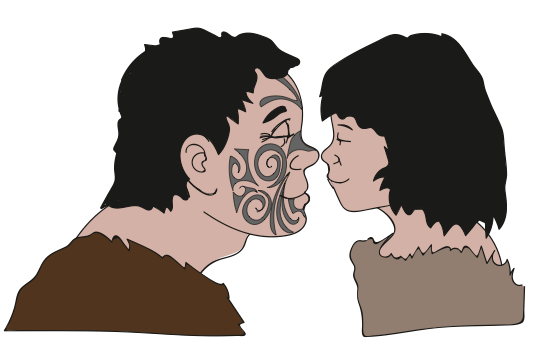
Celebrations and Rites of Passage
The books being reviewed and summarised in this section will help the reader explore and reflect on ideas connected to celebrations, festivals, rites of passage and rituals. The books are mainly realistic fiction and where possible the books were chosen because the author and illustrator had insider knowledges and experiences and connections to the culture and belief system connected to the topic of the book. The ideas in these texts may also cross over into themes dealing with identity claims and intangible heritage.
Other connected resources include
- Celebrations, Festivals and Rites of Passage – Chat pack
- Celebrations, Festivals and Rites of Passage – Fast Four
- Exploring Vocabulary- Celebrations, Festivals and Rites of Passage
- Celebrations, Festivals and Rites of Passage – Tug For Truth
- Celebrations, Festivals and Rites of Passage Book Chat
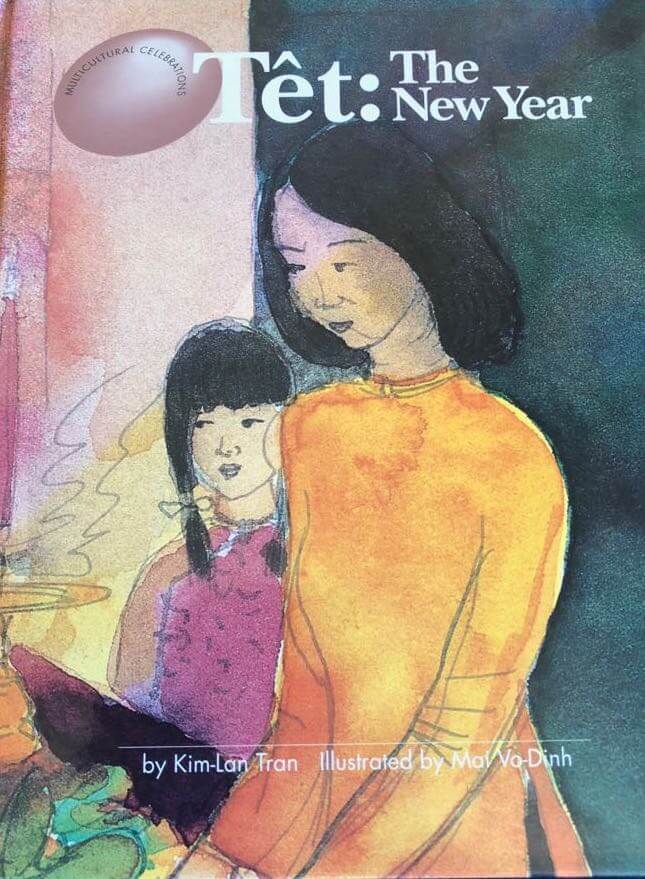
Têt: The New Year
Written by Kim-Lan Tran Illustrated by Mai Vo-Dinh
Published by Modern Curriculum Press 1992
The next set of book reviews we will post are connected to celebrations that mark the beginning of things. We are all set to start with a time of year that is important and much enjoyed by the BeConWiz family, Têt, the lunar new year in Vietnam.
Thinking of Têt brings back memories of a whirling Hanoi, with motorbikes carrying the blooming peach blossom trees and cumquat trees and the feeling that imbues the city is about fresh starts and hope for the future. Sadly, this year we are not in Hanoi to enjoy and celebrate in a style we ha enjoyed over the last 5 years, so reading this book, I could empathise with one of the characters who is missing Têt, as he settles into a new country.
The book is written and illustrated by a Vietnamese woman and man and so there is a congruency to the text that is refreshing.
The illustrations are soft pen and ink illustrations that involve dream like sequences that take the reader to the celebrations as the characters discuss their favourite memories of Têt. Included in the illustrations are some photos of real world scenarios that match the text.
The text itself focuses on a group of children and their Vietnamese teacher who are based in the United States. One character, Huy, is sad because he is not in Vietnam for this Têt. The text is carefully created to have a personal touch, but also include details about important actions, foods and beliefs that are the foundation of Têt celebrations. The text also invites readers to contemplate what it might be like to reconnect to something that is important to them in a new space, encouraging readers to value traditions and beliefs even if they are separated from the spaces they are usually connected to.
This text could be used to explore traditions and elements of festivals, as well as looking at the role of intangible heritage and how it connects to identity.
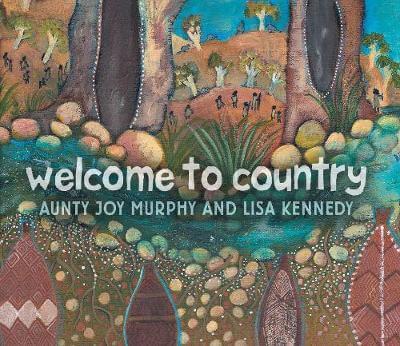
welcome to country
Author: Aunty Joy Murphy Illustrator: Lisa Kennedy
Publisher: Black Dog Books 2016
This text takes the reader on a visual journey through the welcoming ceremony and cultural greeting by the elders of the Wurundjeri community in Australia, when allowing visitors to enter their traditional lands. It is a text based on a welcoming rite of passage.
An elder, Aunty Joy Murphy of the Wurundjeri community, wrote the text. It is a bilingual text. The initial text is written in the language of the Wurundjeri and then an English translation is provided. Lisa Kennedy’s oil paintings take the reader on a visual journey to the lands the reader is being invited on to.
The text explores the significance country has in the belief systems of the Wurundjeri people and the role respect and responsibility have in this welcoming rite. Through the text the reader has the opportunity to get to know some of the core beliefs that underpin the rite of passage as well as some of the actions or ritual connected to the welcoming rite.
It is a quiet text, that invites the readers to calm and quieten themselves, as they are welcomed to country.
The dedications at the back of the text, could also be used to invite learners to ponder on what hardships and prejudices have stood in the way of the Wurundjeri people and other indigenous groups staying connected to important rites of passages, and have them acknowledged as valid and important ceremonies by outsiders of this community.
There are information, ideas and beliefs shared in this text that are connected to the role land, geography and belief systems have to play in rites of passage. This book could also be used to explore intangible heritage or land that is considered heritage.

Let The Celebrations Begin
Author: Margaret Wild Illustrator: Julie Vivas
Publisher: Omnibus Books 1991
This text was published some years ago, but it is a great text to include when inquiring into the role celebrations have in our lives. The celebration in this text is one organised by female (adults and children) prisoners in the Nazi concentration camps at the end of World War 11. The dedication explains where the idea for the text was generated and Margaret Wild and Julie Vivas doe the complex and sombre topic much justice in their words and illustrations.
The text takes the reader through the journey of developing a celebration to mark an ending. It is a moving rite of passage that builds hope out of loss and torment. The reader is invited, through the marvellous illustrations and thoughtful text, to see how ideas and important actions of the past can inform the making of a new and important rite of passage and celebration. The reader is exposed to lots of perspectives in the text from the practical to the hopeful. It would be an interesting text to read in an inquiry connected to loss and change in periods of conflict, and explore how people can reclaim important aspects of their identity and heritage by developing simple but moving rites of passage.
The illustrations are powerful and moving, but not overwhelming for younger readers. The text is poetic and gentle as it shares the characters narratives. A powerful text that every school should have in its library.
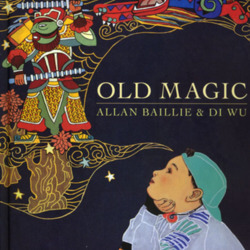
Old Magic
Author: Allan Baillie Illustrator: Di Wu
Publisher: A Mark Macleod Book Random House 1996
A superb text that intertwines the story of two generations and how belief systems and rituals can connect them. The text explores the connection between a Kakek, grandfather and his grandson. It starts by sharing and exploring the disconnect between the two people that has occurred because the family has moved from the ‘old place’ (Indonesia) to the new place (a western suburban setting). The Kakek invites the young boy to revisit and remember old magic and the role it plays in understanding self and culture. Di Wu’s illustrations take the reader on a dream-like journey back into ideas and beliefs represented by traditional style images. As the two characters reflect and remember, the boy Omar, finds a way to connect the old with the new as he creates a kite that is based on symbols and ideas that were present in many of the traditional beliefs, and would have been present in many celebrations and rites of passage.
It is a good text for introducing and exploring the role symbols have in belief and identity systems and how these can be carried and used in new situations and new ways to stay connected with the identity claims and belief systems of individuals and groups. While the text itself does not deal with a specific rite of passage, ritual or celebration, it does explore the ideas that underpin many of these practices and as such is an important text to have if teachers want to go deeper and beyond the festivals, food, flags and costumes elements of celebrations and rites of passage.
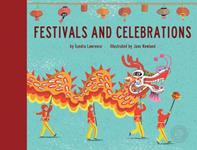
Festivals and Celebrations
Author: Sandra Lawrence Illustrator: Jane Newland
Publisher: 360 Degrees, 2017
This is an interesting non-fiction text that gives the reader a glimpse into lots of celebrations around the world. The text provides facts and details about the purpose of a celebration and some of the rituals attached to various celebrations. It is however just a snap shot, that doesn’t capture the heart and beliefs that sit behind many celebrations. The book deals with two rites of passage to do with loss, so again this complexity of celebrations and rites to say good-bye are missing from texts that children can access.
The text doesn’t really deal with any rites of passage and while the information presented in the text is not euro-centric, the authors seem to present the information through a euro-centric lens.
You could use this book as a starting point for celebrations that are new and interesting to you, or you could use the text to explore how an author’s perspective colours the way a text is written and presented.
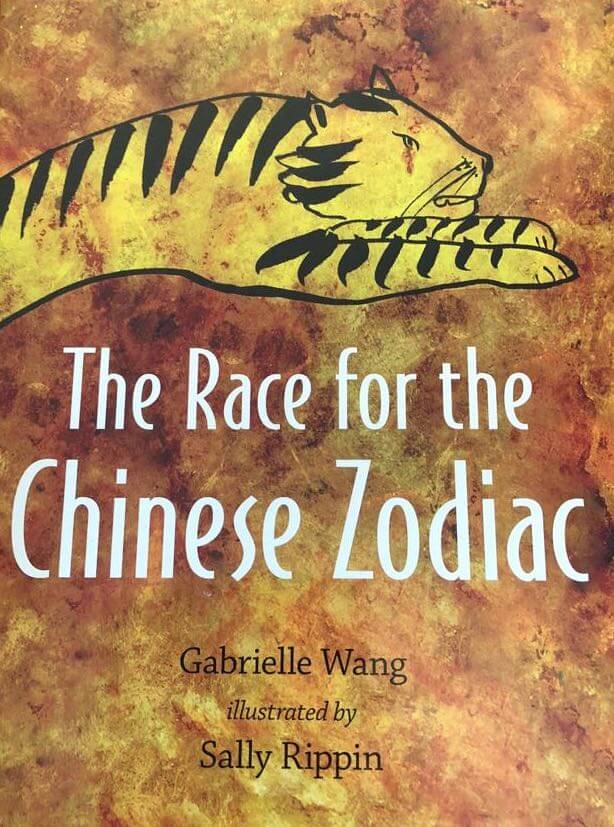
The Race For The Chinese Zodiac
Written by Gabrielle Wang Illustrated by Sally Rippen
Published by Candlewick Press 2010
This book explores the legend behind the zodiac animals connected to the Lunar New Year in China. These animals also appear in the Vietnamese Lunar calendar.
The illustrations are in a traditional Chinese calligraphic pen and ink style. They flow and capture the spirit of the animals they represent. Included in the text are Chinese characters, that are the symbol for the animal in the illustrations.
The text is simple, almost poetic and contains adjectives that give you a clue to the nature of the animals in the text. It was interesting to read and connect it to personal experiences my children and I had living in Vietnam and visiting China. We were frequently asked our birth year as a way of greeting and then we would be engaged in conversations about our zodiac signs and how they might impact on us. The role of the zodiac is a significant belief that underpins many decisions in Chinese and Vietnamese culture and this text does this belief structures justice in the way it is presented. It also invites the reader to consider what the zodiac is, and why it came into being.
This text can be used to explore and develop an appreciation of how belief systems can impact on the choices we make and the perceptions we have about self and others. As always, I am appreciative of the fact that the author and illustrator are from the cultural group that the ideas in the text represent, it is not an appropriation or interpretation of ideas by an outsider. It also makes it possible for those outside this cultural group and belief system a way to unlock ideas and explore new possibilities and perspectives.

New Clothes for New Year’s Day
Written & Illustrated Hyun-Joo Bae
Published by Kane/Miller Book Publishers 2007
The book ‘New Clothes for New Year’s Day’ initially caught my attention because of the beautiful illustrations. Hyun-Joo Bae uses space and colour to draw the reader into the feelings the young protagonist has about New Year. The book is set in a Korean family and it is the tale of a young girl who wakes on New Year’s Day and takes us through the dress rituals and why the ‘newness’ of things contributes to a fresh start and the importance of this. Korean New Year, is a lunar-based celebration called Seollal, and is a very significant celebration.
At the back of the text is some factual information about the celebration and the role new clothes play in the celebration. The factual information invites the reader to consider the role symbols that are colour-based, physical, and calligraphic play in festivals because of their connections to different belief systems.
The text is quiet and poetic, quietly stepping the reader through the preparation of dressing for New Year. The organisation of the text and the stunning illustrations give a glimpse of how despite the excitement of the day; there is a quietness and solemness to the day as well.
This text introduces the reader to ideas about the role colours and symbols play in festivals and traditions and may ignite the reader’s curiosity to further investigate Korean New Year. It can also be used to begin sparking an interest in the role and rituals of dress, costumes and textiles in developing and expressing a cultural identity or how they may be connected to intangible heritage.
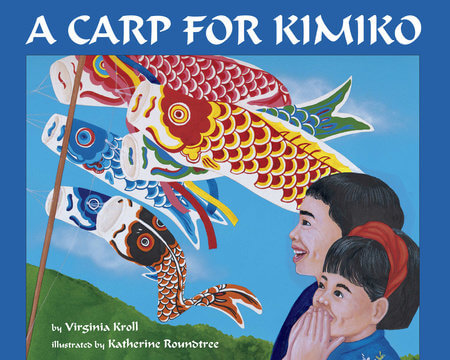
A Carp For Kimiko
Written by Virgina Kroll and Illustrated by Katherine Roundtree
Published by Charlesbridge 1993
This text felt like it was written to explain or share the Japanese traditions connected to Children’s day (Kodomo no Hi) and the gender expectations and roles of this day.
The story is told from the perspective of a young girl as she watches carp kites being prepared for her brothers but not for her. She is reminded about the special girl’s festival Hina-matsuri two months before Children’s day. The text deals with the girl wanting to change tradition and how that is negotiated and dealt with in her family. I would be curious to read a text written about the same celebration by Japanese authors and illustrators.
This text had the feel of a book written for the express purpose of teaching about a particular tradition. It does just that, informing readers of details and facts, but it is missing the charm of the previous books we have reviewed, where the text was written and illustrated by those who have lived in and been a part of the cultural groups whose identity and history is connected to the celebrations and all that it connects to in terms of beliefs and identity claims.
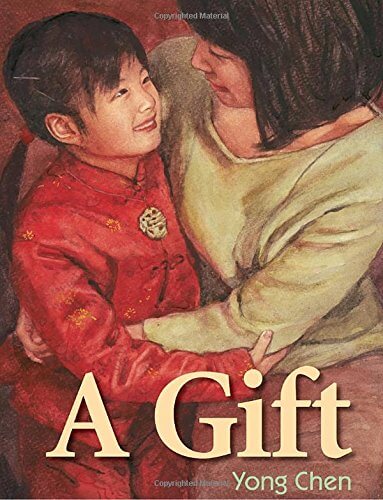
A Gift
Written & Illustrated Yong Chen
Published by Boyds Mills Press 2009
This story is told through the eyes of a young girl and her family as they prepare for the Chinese Lunar New Year. The girl and her mother live in the United States and are preparing for New Year, but are remembering the mother’s family who live and work in China. Early in the text a gift arrives from China, sent to the girl from her Uncles and Aunt. The story from this point is told through a letter narrative as the uncles and aunt describe the creation of a gift they have sent the little girl, Grace. The text is told both through the text, but also the illustrations that enhance the text. The gift that Grace receives, helps the reader get to know and understand some of the symbolism connected not only to Chinese New Year, but also to being a member of a cultural group.
This is lovely text to share with younger readers or have to have in a reading basket for older readers who enjoy picture books.